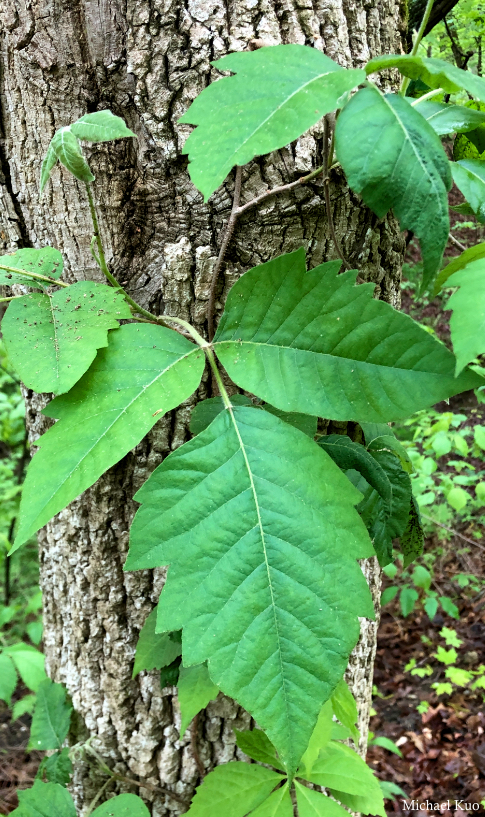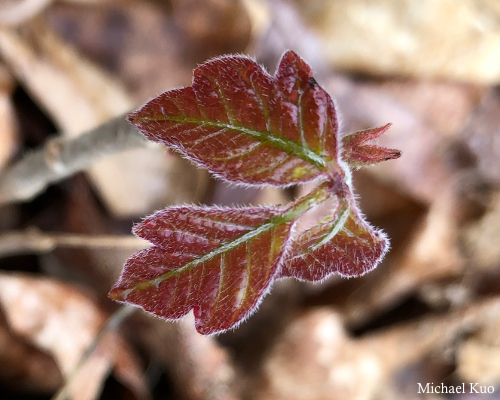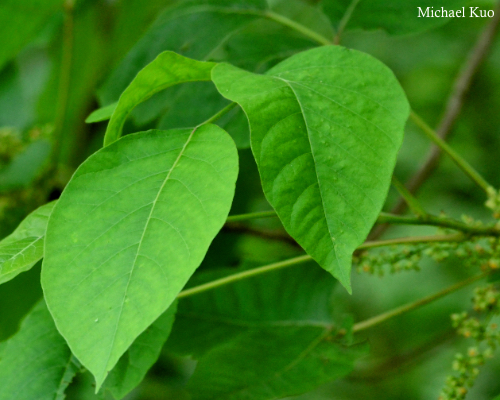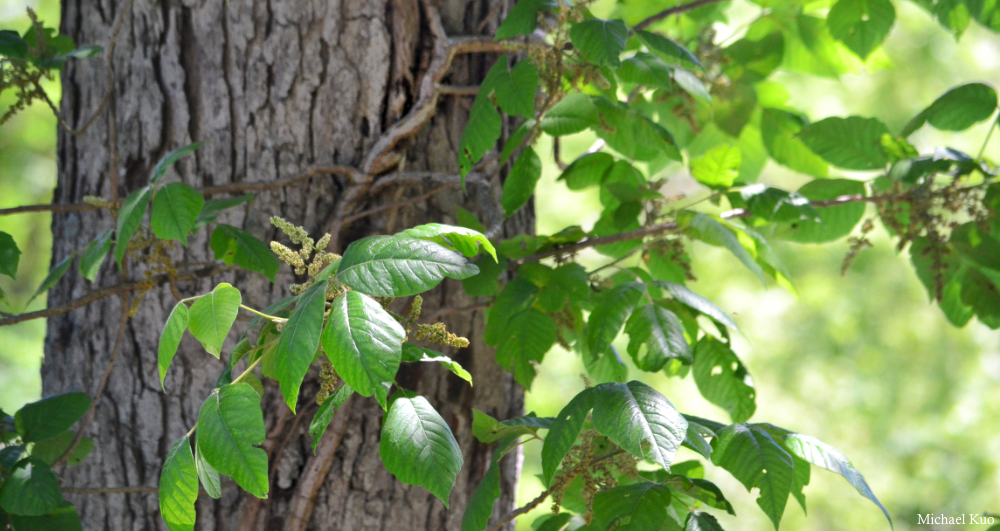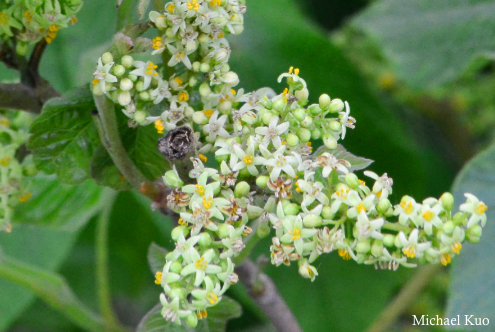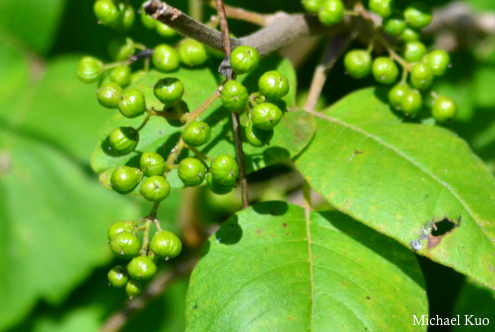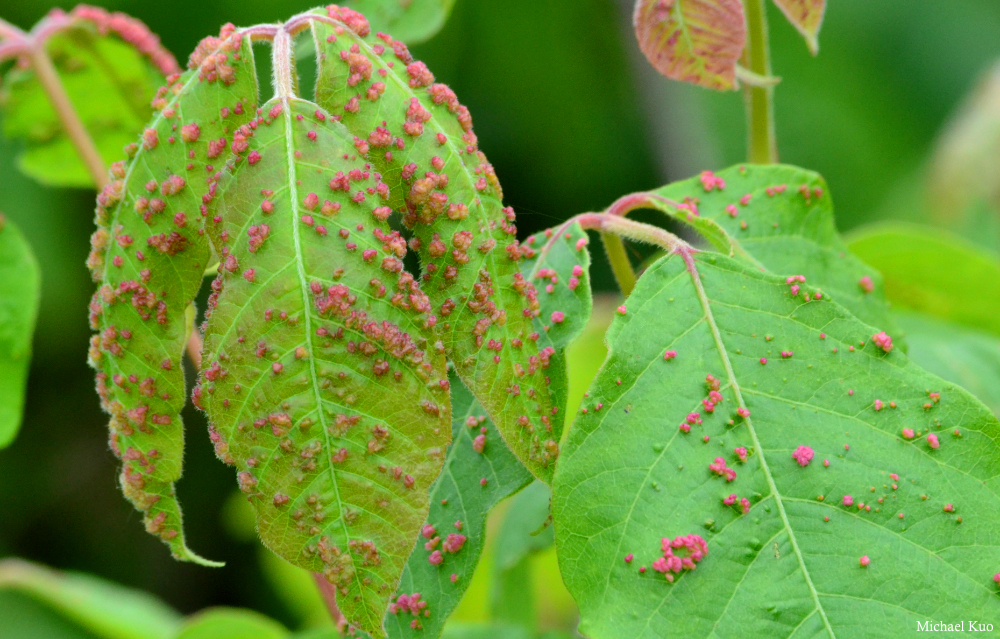 Toxicodendron radicans (poison ivy) |
 |
|
As long as you leave it alone, poison ivy is a pretty cool plant. It takes two forms—as a small shrub or as a creeping vine that can climb tall trees and reach astounding sizes. As almost everyone who grew up in the Midwest knows, its compound "leaves of three" are composed of three leaflets; the central leaflet has a fairly long petiole (leaf stem), while the two bottom leaflets do not. The leaflets are often—but definitely not always—notched once or twice on one side, creating a vaguely mitten-ish outline. The plant can be found just about anywhere, but is particularly common in forest gaps, old fields, riparian locations, and back dunes along the Great Lakes. Seedlings of box elder (Acer negundo) can look very similar to poison ivy in its shrub-like form, but have opposite, rather than alternating, leaves of three. Most people are allergic to the oils in the poison ivy plant, but other animals appear to be unaffected, and the flowers and berries produced by the plant help sustain a wide variety of birds and insects, while the leaves are sometimes consumed by mammals. In the upper Midwest—particularly along the Great Lakes—a seond species of poison ivy, Toxicodendron rydbergii (common name: western poison ivy) can be found; it differs by always being shrub-like (never vine-like) and in its bald (rather than fuzzy) leaf-stems. |
 midwestern range |
|
|
|
|
|
|
|
|
|
Aculops rhois, poison ivy gall mite Occasionally one finds poison ivy that looks like it has contracted a bad case of, well, poison ivy: a spreading rash of small, red blisters. The "rash," however, is composed of galls made by a tiny insect, Aculops rhois—a mite that lays its eggs in emerging leaves. A gall is formed around the eggs, and the mite hatchlings consume the swollen tissue before eventually emerging from the galls as adults. |
|
|
|
References: GN Jones 1971, Kricher & Morrison 1988, RL Jones 2005, Voss & Reznicek 2012, Mohlenbrock 2014, Hilty 2018, USDA 2018. Kuo, Michael & Melissa Kuo (May, 2019). Toxicodendron radicans (poison ivy). Retrieved from the midwestnaturalist.com website: www.midwestnaturalist.com/toxicodendron_radicans.html All text and images © , midwestnaturalist.com. |
